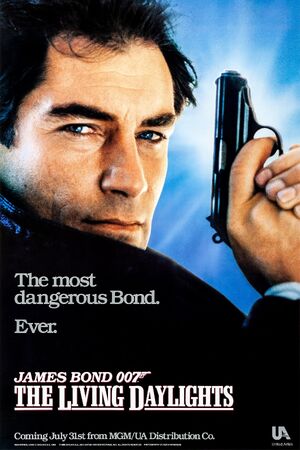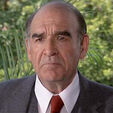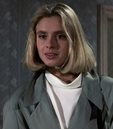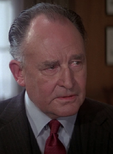James Bond: "Stuff my orders! I only kill professionals. That girl didn't know one end of her rifle from the other. Go ahead. Tell M what you want. If he fires me, I'll thank him for it... Whoever she was, I must have scared the Living Daylights out of her."
―James Bond to Saunders, Head of Section "V" Vienna
The Living Daylights is a James Bond short story written by Ian Fleming, first published in the first color magazine supplement of the Sunday Times newspaper, on February 4, 1962, and later reprinted in Argosy magazine, under the title "Berlin Escape". In 1966 it was the second story in the short story collection Octopussy and The Living Daylights, published two years after Fleming's death.
The story inspired an eponymous film, released in 1987. It featured Timothy Dalton in the first of two portrayals as British secret service agent James Bond. The Living Daylights is the fifteenth film in the EON Productions series. It was produced by Albert R. Broccoli, his stepson Michael G. Wilson, and Broccoli's daughter Barbara Broccoli. This was the last film to make use of an Ian Fleming story title until the release of Casino Royale in 2006.
Plot summary
Gibraltar
In the prologue, three double-0 agents parachute onto Gibraltar to test its defences. One is captured almost immediately by the SAS, while James Bond and fellow agent 004 start scaling the cliffs to the base. As they ascend an assassin appears and sends a tag reading Smiert Spionom down the rope before cutting it, sending the second double-0 agent to his death. Bond witnesses the incident and gives chase to the assassin, ending in an explosives-laden Land Rover careening down Gibraltar's narrow roads and then into the air. Bond escapes with his reserve parachute while the assassin is killed when the Land Rover explodes in mid-air.
Rescuing Koskov
The early part of the film has much of the original short story's plot dealing with Bond assisting in the defection to the West of a devious KGB General, Georgi Koskov, covering his intermission escape from a concert hall in Bratislava, Czechoslovakia. Bond notices that the sniper protecting Koskov is a beautiful cellist from the orchestra, Kara Milovy. Suspecting she is not an assassin, he shoots the rifle out of her hands, sparing her life, whilst facilitating Koskov's escape from the hall.
In England, General Koskov informs MI6 that the KGB is being run by power-hungry General Pushkin. According to Koskov, Pushkin has revived the old policy of Smert' Smionam — literally, Death to Spies (SMERSH), a programme of Western spy assassinations — and as such Pushkin needs to be eliminated. This story is credible given the recent murder of Bond's partner in the Gibraltar training exercise. Shortly afterwards the KGB, led by the assassin Necros, raids the safe-house where British Intelligence have Koskov and snatch him back East.
Czechoslovakia
Bond leaves to kill General Pushkin. Q supplies him with a new Aston Martin and an electric key-finder able to both release stun gas or explode. Bond discovers that Kara Milovy is in fact General Koskov's girlfriend, and begins suspecting that Koskov's defection and recapture were staged. He returns to Bratislava, posing to Milovy as Koskov's friend; shortly afterwards the pair flee to Vienna, Austria, in the Aston Martin. They are pursued by KGB and Czechoslovak Police (Veřejná bezpečnost or VB — Public Security), but Bond and Milovy escape using the Aston Martin's weapons. Bond, however, is forced to destroy the car, whereupon he and Milovy sled down a snow-covered hill in the girl's cello case.
At the opera in Vienna Bond excuses himself from Milovy to meet his MI6 contact, Saunders, in a café. Saunders has investigated Koskov's story and discovered a tenuous link between him and a greedy arms dealer, "General" Brad Whitaker. Later in the film, it is revealed that Whitaker was merely a self-styled general, as he had been expelled from West Point for cheating, and had never served as a military officer. The Stradivarius cello Milovy owns, though bought by Koskov, was funded by Brad Whitaker. Whitaker had arranged to supply the KGB with Western high-technology weapons through Koskov, and Koskov is attempting to deliver the down payment in diamonds. Pushkin is in fact investigating Koskov, and so Koskov wants him dead. Unable to use Necros as the Soviets are too familiar with him, which would only jeopardize their plans, Koskov intends to deal with Pushkin by having the British kill him. After Whitaker learns about Koskov's plan, he agrees to it but wants Necros to ensure that Pushkin is dead.
As Saunders leaves the café he is killed by Necros, who detonates a bomb slamming the sliding front door of the café on to Saunders. Necros leaves behind a balloon with the words Smiert Shipionam on it, unaware that Bond already suspects the true motives behind the trail of clues lain for him. Bond returns to Milovy, and they immediately leave for Tangier, Morocco.
Tangier
Bond confronts Pushkin, who says the KGB deactivated Smiert Smionam decades earlier. This confirms Bond's suspicions that a third party is behind the plot. Bond and Pushkin decide to let Koskov progress with his scheme by faking Pushkin's assassination; Bond "kills" Pushkin as he speaks to a trade convention in Tangier. Ironically, Bond saves Pushkin; Necros was about to kill Pushkin before Bond appeared and shot him first. Bond escapes from the police and is picked up by Felix Leiter (again, the CIA man is a different actor; first-time viewers of The Living Daylights are tricked into, at first, thinking he is an enemy).
Thinking Pushkin dead, Koskov contacts Milovy, convincing her that Bond is KGB looking to kill him. She assists in capturing Bond for him, grasping too late that Koskov has fooled her, and had intended killing her in his defection. After being captured by Koskov, Bond and Milovy are flown to a Soviet air base in Afghanistan, at the height of Soviet occupation.
Afghanistan
Imprisoned on arrival, they escape, helped by Bond's key-finder, and free a prisoner to be hanged the next day. The prisoner is Kamran Shah, leader of the local Mujahideen. Bond discovers that Whitaker and Koskov are paying diamonds for a large shipment of opium, which would turn a profit within days of distribution in the streets of the US, and so continue supplying the Soviets with arms.
The Mujahideen help Bond and Milovy infiltrate the air base. Bond plants a bomb in the back of the cargo airplane transporting the drugs, but, Koskov recognises him. Bond hijacks the airplane, while the Mujahideen attack the airbase. Milovy, at the last minute, joins Bond in the airplane take off and assumes the controls while Bond leaves to defuse his bomb. Necros, however, has stowed away on board, and attacks Bond. Milovy accidentally opens the cargo door, and Bond and Necros are sucked out, on the cargo net holding the opium; Necros and Bond fight. Necros is left hanging from Bond's boot. Bond cuts his bootlaces, dropping Necros to his death.
Bond somehow manages to find the bomb amidst a slew of bags and defuses it with just 4 seconds left on the fuse, and Milovy flies over Kamran Shah's Mujahideen, who are being pursued by Soviet soldiers across a bridge. Bond reactivates the bomb and drops it onto the bridge, killing the Soviets, helping the Mujahideen win their battle. However, soon after the gunfire-punctured fuel tanks deplete, and as there is no place to land Bond and Milovy use the release chute on the jeep to extract themselves as the airplane crashes and explodes.
Bond arrives at Whitaker's residence, and pops in as "General" Whitaker is playing a battle in his terms. When Bond tells him that the opium is burned, Whitaker is determined to kill him. He takes out a heavy assault rifle with a shield. When Bond uses up all of his bullets, Whitaker makes a glib remark: "Well, you've had your 8, now I'll have my 80!". Whitaker fires like crazy and taunts Bond with remarks about new technology with weapons.
In the final confrontation with Whitaker, Bond's key-finder saves him, again, when using the plastic explosive to topple a bust of Wellington onto Whitaker (an appropriate death for a man who styled himself in wax as Napoleon). The KGB save Bond's life when agents, led by General Pushkin burst in and kill the Whitaker guard who had cornered Bond. General Koskov is there, too, and, while not killed, he is to be flown back to Moscow "in the diplomatic bag", per Pushkin's order.
Cast & characters
Crew
- Directed by: John Glen
- Produced by: Albert R. Broccoli, Michael G. Wilson, Barbara Broccoli
- Written by: Ian Fleming (stories)
- Screenplay by: Michael G. Wilson, Richard Maibaum
- Composed by: John Barry
- Production design by: Peter Lamont
Soundtrack

Teaser poster.
See: The Living Daylights (soundtrack)
Vehicles & gadgets
Main articles: List of James Bond vehicles and List of James Bond gadgets
- Aston Martin V8 Vantage (Series 2) — Equipped with the usual weapons, including side skis, spiked tires, missiles, lasers, rocket propulsion, a self-destruct device and a modified radio to tune in to police/military bands.
- Keychain — Bond's keychain, designed by Q-Branch, also is an explosive triggered by a wolf whistle. It also could deploy stun gas (when the user whistles "Rule Britannia"), and contains lockpicks capable of opening 90% of the world's locks.
- Ghetto Blaster — Never used by James Bond; it is seen tested in Q-Branch for American allies. The ghetto blaster is an '80s–style rocket-firing, stereophonic, cassette tapedeck.
- Scouring Pig — Used to initially to clean and check the natural gas pipeline from USSR to West Europe. It's converted here specially to smuggle a man out of the Eastern bloc, with Koskov being the first.
- Harrier — This V/STOL aircraft evacuates Koskov after his defection to the west.
Locations
Film locations
- Gibraltar
- Bratislava, Czechoslovakia
- Vienna, Austria
- London, U.K.
- Afghanistan
- Tangier
- New York(Mentioned not shown)
Shooting locations
Trivia
- Timothy Dalton had originally been considered for the role of James Bond as a replacement for Sean Connery, but had ruled himself out as being too young. He had been considered again when Roger Moore decided to leave the role prior to For Your Eyes Only, and was apparently all but signed to portray the character when Moore changed his mind at the last moment.
- Both Sam Neill and Pierce Brosnan were screen-tested for the role of James Bond in The Living Daylights. Brosnan was successfully signed for the role, but his contract to the television programme Remington Steele forced him to withdraw; he would wait seven years for his second chance, in GoldenEye. Maryam d'Abo, however, earned her Kara Milovy role with her screen test with Brosnan; she was not in the running for a role in the film, but had been hired to act opposite the 007 contenders; impressed, the producers gave her the part.
- The Living Daylights marks the first time a headbutt is used in a James Bond movie, as well as the first use of a variation of the word "fuck" on-screen (by Timothy Dalton, although he is not audible at the time).
- Richard Maibaum and Michael G. Wilson wrote a first draft of a script portraying James Bond's first field mission; Cubby Broccoli rejected the idea.
- Originally, the KGB general set up by Koskov was to be General Gogol, however, actor Walter Gotell was ill, unable to handle the major role; the character of Leonid Pushkin replaced Gogol, who appears briefly at the end of the film, having transferred to the Soviet diplomatic service. This is Gogol's final appearance in a James Bond film (Gotell died in 1997). The similarity between Pushkin and Gogol is emphasized by the fact that Pushkin is seen accompanied by a beautiful blonde, much as Gogol was in his early appearances.
- This is the final James Bond film to be scored by John Barry.
- Joe Don Baker would reappear in GoldenEye and Tomorrow Never Dies, as a different character, Jack Wade, Bond's CIA liaison and replacement for Felix Leiter.
- a-ha's lead vocalist, Morten Harket was offered a small role as a villain's henchman in The Living Daylights, but declined, because of lack of time and the reasoning that they wanted to cast him just because of his popularity, not his acting. Instead, a-ha sang the title song for The Living Daylights.
- In a cameo role, series composer John Barry conducts the orchestra in Vienna at the end of the film. Producer Michael G. Wilson also continues his string of Bond film cameo appearances; he can be seen as a member of the opera house audience.
- The use of the Russian phrase "Smert Shpionam" ("Death to Spies") is a reference to SMERSH, the Russian spy agency James Bond combated in the early Ian Fleming novels. It was mentioned in only one previous Bond film, From Russia with Love.
- The Living Daylights is the first Bond film since Moonraker to not have its title announced in the end credits of the previous film, nor has any Bond film since had its title announced in the end credits of the previous film.
- The cargo plane sequence was originally planned to be ended with Bond and Kara flying over the ocean and being intercepted by two US Navy F-4 Phantoms.
- It was the first film in 14 years to feature Felix Leiter who had not been seen since Live and Let Die.
- The actors who portrayed Pushkin and Rubavitch have starred in science fiction television series after the film's release - John Rhys-Davies in Sliders and Virginia Hey in Farscape. Both actors appeared in 1980s-era blockbuster film franchises (Rhys-Davies in the Indiana Jones series and Hey in Mad Max 2).
- This film is noted for Virginia Hey appearing partially nude in a Bond film outside the opening credits (images of nudity have been used in a majority of the Maurice Binder designed title sequences).
Videos
Trailer
| File:The Living Daylights (1987) - Open-ended Trailer (e16001) |
Opening Title Sequence
| File:The Living Daylights Opening Credits |
Clips
| File:The Living Daylights Bond 50 (1987) - Clip Glass Door | File:The Living Daylights Bond 50 (1987) - Clip A Real Man |
| Saunders is killed with a glass door | Bond meets a lady on a boat |
| File:Bond 42 Baggage Handler (The Living Daylights) | File:Bond 14 Rocked In Gibraltar (The Living Daylights) |
| Bond fights Necros on a plane | Gibraltar sabotage scene |
External links
| James Bond films |
|---|
| Sean Connery Dr. No (1962) • From Russia with Love (1963) • Goldfinger (1964) • Thunderball (1965) • You Only Live Twice (1967) • Diamonds Are Forever (1971) |
| George Lazenby On Her Majesty's Secret Service (1969) |
| Roger Moore Live and Let Die (1973) • The Man with the Golden Gun (1974) • The Spy Who Loved Me (1977) • Moonraker (1979) • For Your Eyes Only (1981) • Octopussy (1983) • A View to a Kill (1985) |
| Timothy Dalton The Living Daylights (1987) • Licence to Kill (1989) |
| Pierce Brosnan GoldenEye (1995) • Tomorrow Never Dies (1997) • The World Is Not Enough (1999) • Die Another Day (2002) |
| Daniel Craig Casino Royale (2006) • Quantum of Solace (2008) • Skyfall (2012) • Spectre (2015) • No Time To Die (2021) |
| Unofficial films Casino Royale (1954) • Casino Royale (1967) • Never Say Never Again (1983) |
| All Bond films on Archive |


















